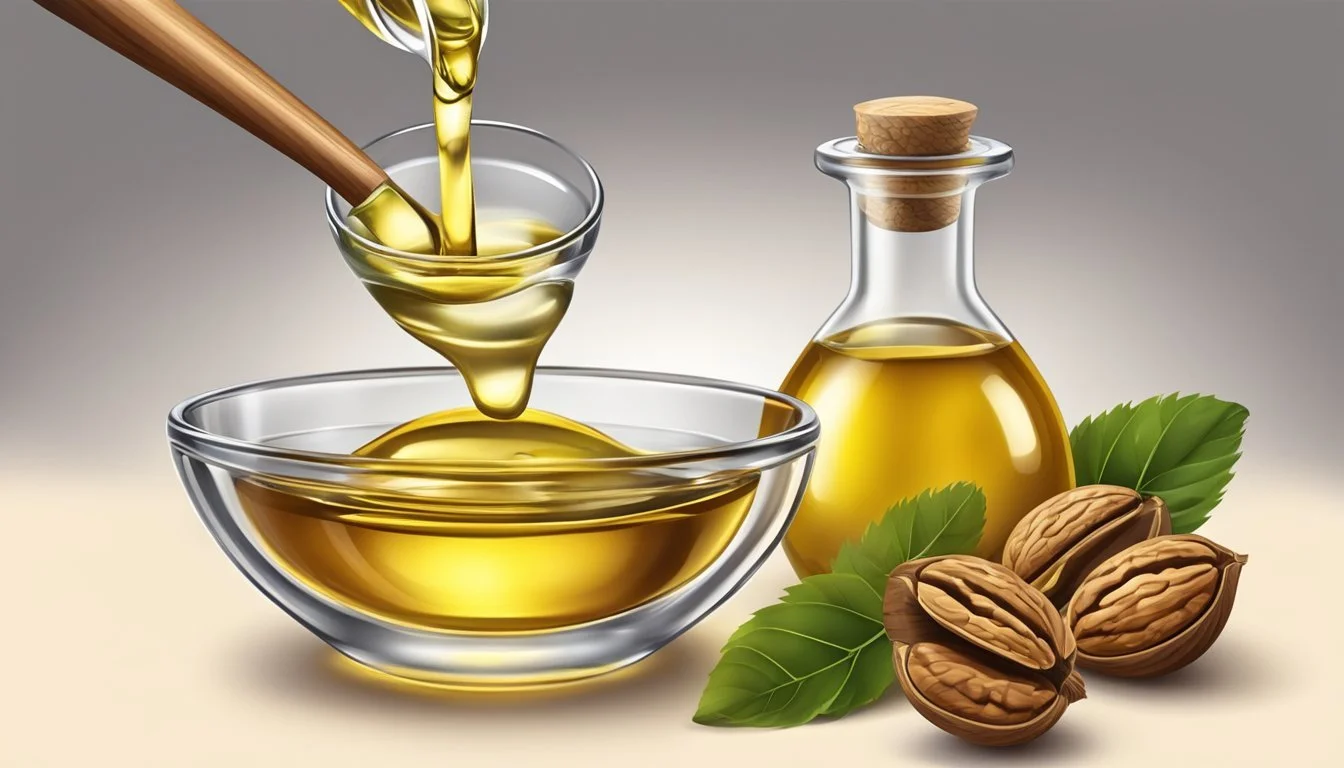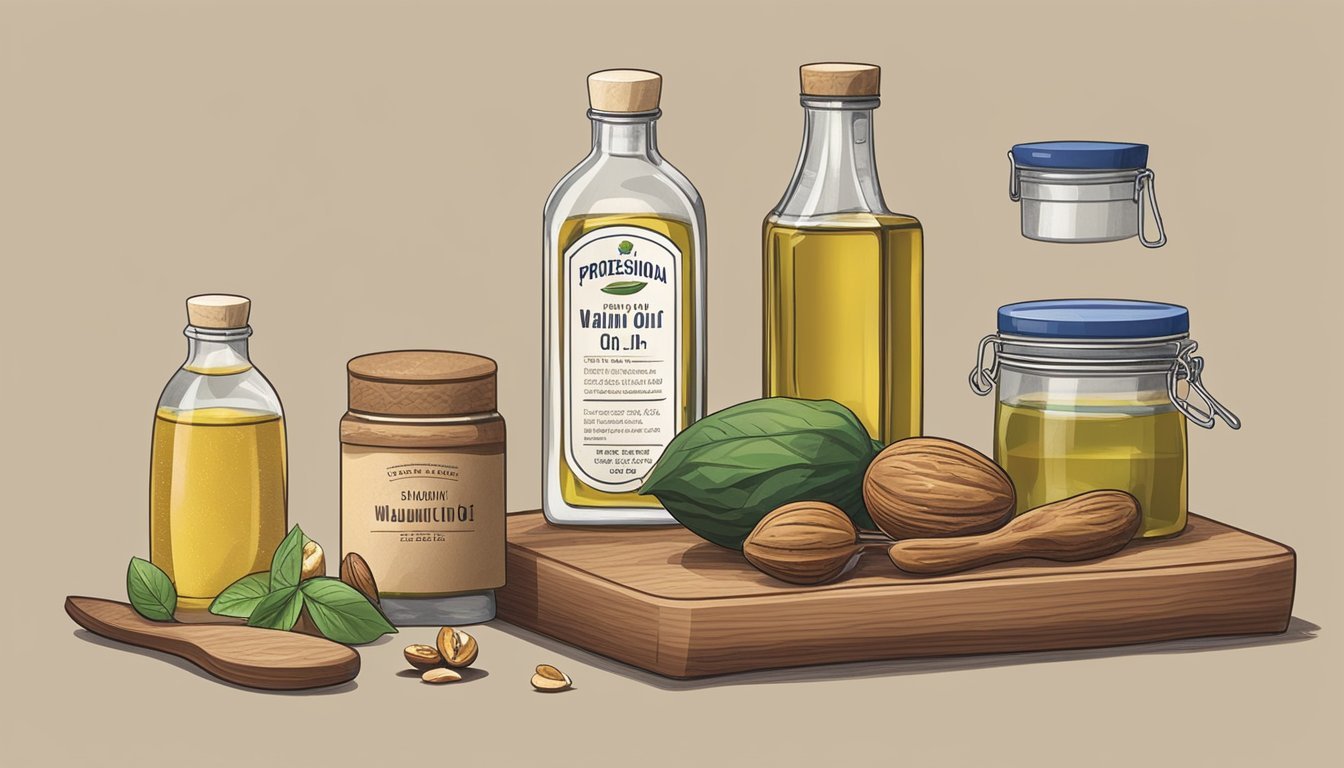How Long Does Walnut Oil Last?
Understanding Shelf Life and Storage Tips
Walnut oil (how long does walnut oil last?), known for its rich, nutty flavor, is a versatile ingredient in both culinary and artistic applications. Its shelf life is an important consideration for consumers wishing to preserve its quality and nutritional benefits. Typically, unopened walnut oil has a shelf life ranging from 6 months to 2 years, with factors such as the oil's quality, production date, and storage environment contributing to its longevity.
Proper storage is crucial in extending the life of walnut oil. It should be kept in a cool, dark, and dry place to prevent spoilage. Exposure to heat, light, and air can hasten deterioration, leading to rancidity. Once opened, walnut oil's susceptibility to rancidification increases, and its lifespan shortens to a few months. Refrigeration after opening can help to maintain its quality by slowing down the oxidation process, although it may cause the oil to become cloudy or solidify, which is reversible upon warming to room temperature.
The quality of walnut oil is assessed mainly by its smell and taste; a fresh bottle should have a pleasant, mild nutty aroma and flavor profile. When it turns rancid, the oil develops a sour or off odor and a bad taste, indicating that it is no longer suitable for consumption. Periodic checks on the flavor and aroma of walnut oil, as well as mindful adherence to storage recommendations, ensure that it remains a delicious and healthy addition to a variety of dishes.
Properties of Walnut Oil
Walnut oil is known for its distinctive taste and nutritional value which makes it a unique addition to culinary practices. It contains significant amounts of omega-3 fatty acids and polyunsaturated fats.
Nutritional Profile
Walnut oil is high in essential fatty acids that are beneficial for health. It predominantly contains polyunsaturated fats, which include a substantial amount of omega-3 fatty acids. This composition is favorable for a heart-healthy diet. Walnut oil also offers a moderate amount of monounsaturated fats and a lower quantity of saturated fats compared to other cooking oils.
Characteristics and Flavor
The oil extracted from walnuts boasts a rich, nutty flavor that enhances the taste profile of dressings and finished dishes. Its flavor is delicate and it is most beneficial to use walnut oil as a finishing oil to maintain its essence. Due to its nutty flavor, walnut oil is rarely used in high-heat cooking as it can lose its flavor nuances.
Smoke Point and Cooking Use
Walnut oil has a relatively low smoke point of approximately 320°F (160°C), making it less ideal for high-heat cooking methods like frying. It is best used in cold applications, such as salad dressings or dips, or added to baked goods for a nutty essence. It can complement the flavors in baking preparations, contributing both moisture and a distinctive taste to the final product.
Storing Unopened Walnut Oil
To ensure the longevity and freshness of unopened walnut oil, one must adhere to specific storage guidelines. Proper storage significantly impacts both shelf life and quality.
Ideal Storage Conditions
Unopened walnut oil thrives in conditions that are cool and shielded from light. For optimal preservation, the oil should be placed in a dark place, such as a pantry or cupboard, away from any sources of heat, like stoves or sunlight through a window.
Temperature: The area should maintain a consistent, cool temperature.
Light: A dark bottle can protect the oil from light, which can degrade the oil over time.
Seal: A tightly sealed cap prevents oxidation.
Expected Shelf Life
The shelf life of unopened walnut oil generally ranges between one to two years, contingent on storage conditions. Refrigeration can extend this duration, though it is not obligatory for unopened bottles. Consumers should verify the expiration date on the bottle as a preliminary quality indicator. Walnut oil stored in accordance with the ideal conditions will usually preserve its quality until the indicated expiration date.
Room Temperature (approx. 68°F/20°C): Up to 1 year
Refrigerated: Up to 2 years
It is crucial to observe these practices as they substantially prolong the usability of walnut oil, making it a reliable addition to culinary applications.
Handling Opened Walnut Oil
Once opened, walnut oil's shelf life decreases due to exposure to air which leads to oxidation. Proper storage is paramount to preserving its quality.
Sealing and Exposure to Air
After using walnut oil, it's critical to seal the bottle tightly to minimize exposure to air. Air contact accelerates oxidation, which can degrade the oil's quality and shorten its lifespan. To safeguard the oil, one should always ensure the cap is secured promptly after each use.
Refrigeration Benefits
Storing opened walnut oil in the fridge significantly extends its shelf life. Refrigeration helps in slowing down the rancidity process by creating an environment less conducive to the oxidation of the fats in the oil. Ideally, one should always refrigerate walnut oil after opening, where it can last between 6 to 8 months.
Signs of Spoilage
Observing any changes in taste, smell, or color can indicate spoilage. A rancid walnut oil may develop a bitter taste and an off-putting smell. If any signs of spoilage are evident, it is safer to discard the oil to avoid consumption of deteriorated quality that may not be suitable for use.
Safety and Consumption
When considering the safety and consumption of walnut oil, consumers must be vigilant about its shelf life and the potential health risks of consuming rancid oil. The oil's quality can deteriorate, and it is crucial to recognize when it’s safe to use and when it should be discarded.
When to Use Walnut Oil
Walnut oil is ideally used in cold dishes such as salads and dressings, where its nutty flavor can be appreciated. It is not recommended for high heat cooking as the heat can degrade its quality and beneficial properties. When using walnut oil, one should check:
The expiration date prior to use.
Clarity and color, as oil that has darkened or become cloudy may indicate spoilage.
Scent, as a fresh nutty aroma is indicative of good quality, while a bitter or off smell suggests that the oil has gone bad.
Health Implications of Spoiled Oil
Consuming rancid walnut oil can pose health risks, as it may contain harmful compounds that have formed as the oil oxidized. Signs that walnut oil has spoiled include:
A rancid or sour smell.
A bitter taste.
Changes in texture.
Should one detect any of these characteristics, the oil should not be consumed and must be disposed of properly to avoid the consumption of potentially harmful substances.
Common Uses in Cookery
Walnut oil, known for its delicate and nutty flavor, emerges as a versatile ingredient in the culinary world, particularly favored for its ability to enhance both sweet and savory dishes.
Suitability for Cooking Methods
Walnut oil is not typically used for high-heat cooking due to its low smoke point. However, it proves excellent as a finishing oil. It can add an exquisite taste when drizzled over completed dishes. Specifically, walnut oil is:
Ideal for dressings and marinades, imparting a rich, nutty essence.
Better suited for baking where intense heat is indirectly applied, as in baked goods like cakes and cookies.
Recommended for garnishing, adding a refined touch to salads and pastas after they have been cooked.
Recipes and Pairings
Walnut oil's unique flavor pairs well with various ingredients. Chefs often incorporate it into specific recipes where its profile can truly shine. For instance:
As a salad dressing, it pairs especially well with earthy greens and robust cheeses.
For a distinctive taste in baking, it can be substituted for other fats in muffins and dessert breads.
Walnut oil can make for an elegant dip or sauce component, particularly when combined with other quality ingredients such as fine vinegars and herbs.
By respecting these applications, chefs and home cooks alike can harness the flavorful potential of walnut oil in their culinary creations.
Comparative Analysis With Other Oils
In comparing the shelf life of walnut oil to other oils, it is important to consider both the stability and the unique properties of each oil. Different oils vary in their shelf life due to their chemical composition and the potential for oxidation.
Olive Oil vs Walnut Oil
Olive oil, renowned for its stability and longevity, generally has a shelf life of 18 to 24 months when stored properly. It contains antioxidants that help resist rancidity. In contrast, walnut oil is a more delicate nut oil with a shelf life of approximately 6 to 12 months after opening. The key difference lies in the oil's susceptibility to become rancid; walnut oil is higher in polyunsaturated fats, making it more prone to oxidation and shorter shelf life compared to the monounsaturated fats in olive oil.
Oil Type Monounsaturated Fats Polyunsaturated Fats Shelf Life Olive Oil High Low 18-24 months Walnut Oil Low High 6-12 months
Substituting Other Nut Oils
When considering substitutes for walnut oil, one should keep in mind the flavor profile and shelf life. Almond oil and avocado oil are potential substitutes. Almond oil has a neutral taste and a similar shelf life to walnut oil, making it a suitable alternative in terms of stability. Avocado oil is also a good substitute and has an even longer shelf life, up to 12 to 24 months, due to higher levels of monounsaturated fats and vitamin E which naturally prolongs its freshness.
Almond oil: Neutral taste, 6-12 months shelf life.
Avocado oil: Mild, buttery flavor, 12-24 months shelf life.
It's important to note that while these oils can be substituted for walnut oil, the individual flavors and nutrient contents of each will impart different characteristics to dishes.
Practical Tips and FAQs
This guide provides targeted advice on preserving walnut oil and troubleshooting storage issues. By adhering to specific storage methods and conditions, one can maximize the oil's longevity.
Best Practices for Extending Shelf Life
To extend the shelf life of walnut oil, proper storage is crucial. Light and temperature are significant factors that can degrade its quality:
Airtight Container: Always store walnut oil in an airtight container to protect it from oxygen and contaminants. After each use, sealing the container helps prevent oxidation and rancidity.
Storage Location: Choose a cool, dark place away from direct sunlight, such as a pantry or a cabinet.
Temperature: The ideal temperature for storing walnut oil is below room temperature. The refrigerator can extend its life but may cause cloudiness or solidification. This does not affect the oil's quality – it will return to its original state at room temperature.
Moisture: Keep it away from moisture to prevent spoilage.
FAQs
Q: How long can walnut oil last unopened?
A: Unopened walnut oil can last up to two years if stored correctly in a cool, dry, and dark location.Q: What is the shelf life of walnut oil once opened?
A: Once opened, its shelf life decreases to approximately 6-12 months, depending on storage conditions. Refrigeration can extend this up to 8 months.Q: Can I use expired walnut oil?
A: If walnut oil is past its expiration date, it's best to check for signs of rancidity before use. Spoiled oil should be discarded.
Troubleshooting Common Issues
Identifying and resolving storage issues ensures the quality of walnut oil:
Discoloration or Off Smells: These are signs that the oil has gone rancid and should not be consumed.
Cloudiness: If refrigerated walnut oil becomes cloudy, simply allow it to reach room temperature before use. This change is a physical reaction and not indicative of degradation.
Thickening or Solidification: In colder environments, walnut oil might thicken or solidify. Similarly to cloudiness, this is reversible by warming the oil to room temperature.
By following these guidelines, consumers can enjoy the rich flavor and health benefits of walnut oil for as long as possible while minimizing waste and ensuring safety.
Sustainability and Environmental Impact
When considering the sustainability and environmental impact of walnut oil, one must take into account both the life cycle of its packaging and how its production and disposal influence the carbon footprint.
Packaging and Disposal
The containers used for walnut oil, typically glass or plastic, play a significant role in its environmental impact. Glass can be infinitely recycled, but it is heavier and often requires more energy to transport. Plastic, while lighter, poses a disposal issue as it can take hundreds of years to decompose. The Environmental Protection Agency (EPA) encourages the recycling of both glass and plastic to mitigate environmental harm.
Glass Bottles: Recyclable but energy-intensive to transport
Plastic Bottles: Less energy to transport but challenging to dispose of responsibly
Effect on Carbon Footprint
The production and transportation of walnut oil contribute to its carbon footprint. One considers the energy used in extracting and refining the oil as well as the distance it travels to reach consumers. The Environmental Protection Agency (EPA) has guidelines in place aimed at reducing emissions throughout a product's life cycle, but the onus remains on producers and consumers to make environmentally conscious choices. Choosing walnut oil from local sources where possible can help in reducing the overall carbon footprint associated with transportation.
Production: Energy used in extraction and refining processes
Transportation: Emissions from shipping long distances










